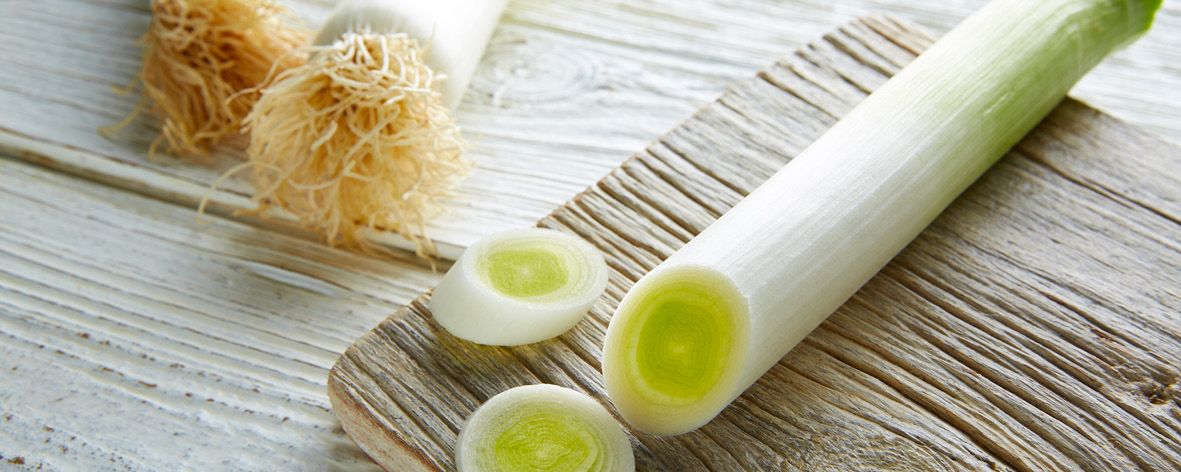All you need to know about … Leeks

Leeks are members of the allium family, along with onions, garlic and shallots, but they have a milder flavour than their family members. This mild flavour means that they are often overlooked as an ingredient but they have a lovely oniony flavour and make a versatile addition to your culinary repertoire. Leeks are delicious in comfort food like soups and used raw make a fabulous addition to salads. You can caramelise them, braise them with butter, and they are a perfect pairing with potato. Nutritionally leeks have almost no saturated fat or cholesterol and are low in sodium. They are a good source of fibre, vitamins A, B6, C, K, magnesium, iron and folate.
When buying, look for leeks with a long white section as this is the part that you will use the most in cooking. The trimmed down portion of their dark green leaves and the roots (if still attached) can both be saved and used to make stock. Leeks can be kept in the fridge for up to a week, wrapped in a damp tea towel or paper towel.
Unlike some other alliums that form a tight bulb, a leek's long cylindrical shank is packed with layers. This means that they do trap dirt so it is crucial that you wash them thoroughly. Prepare leeks by removing the dark green leaf end, and then chopping the white and light green section into rings.
Place the leek rings into a bowl of cold water and leave to soak for a few minutes. Shake them or use your hand to agitate them in the water to remove any soil or grit that is still trapped between the layers. Using your hands or a spoon place the leek rings into a colander and give one final rinse with fresh running water.
Cooked at a low heat, leeks slowly break down into a succulent base. Try them with pasta sauces, soup, and risottos, like this Leek and Pumpkin Risotto. You’ll find other recipes using leeks on our website, just search “leek”.

